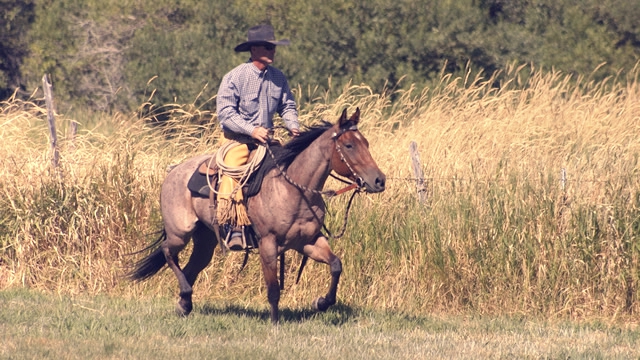Written by Martin Black
We have all heard it said that “A horse’s first means of defense is flight, and his second means of defense is to fight.”
Then we hear: “It’s natural for a horse to go against pressure.” Or, “Giving to pressure is against a horse’s nature, he has to be taught to yield to pressure.”
Which way is it? These statements sound like opposites to me. Wouldn’t a horse be yielding by running away, and fighting when he goes against pressure? When a horse is free from any confinement, and we put pressure on him, he will leave or yield to pressure. When a horse is confined in a small area—a corral or stall, or by a halter or bridle—and feels escape is not an option, he will resist or fight the pressure.
Anytime we have a horse that seems to resist pressure, look for anything that he may think is prohibiting his escape. If we can open up and give him some more room, then he may find somewhere to relocate and not fight.
For example, when we are trying to move a horse laterally off our leg and he seems to resist the pressure, there was a point he tried to move somewhere, and we blocked him with the reins. He may then think that the only escape route is blocked and start resisting.
We need to understand that when a horse thinks there is no option to escape the pressure, he will go against it. We need to allow the horse to move his feet somewhere, anywhere, then direct the movement in the direction we desire. If we don’t have any life in the horse’s feet, it is more difficult to direct them. If we first get some movement, then try to direct him, he can learn to associate the direction of movement to the leg pressure. When he responds, give him relief. That will become the escape for him to look for next time.
On the other hand, if a more sensitive horse starts to resist some pressure, and we decrease the pressure or wait and give him more time to look and find an escape, then he doesn’t feel like he has to fight. Instead, he feels like he has gotten away from the pressure.
An example of this would be when we ask a horse to respond to a leg. He may respond to some light pressure, but when we increase it, we feel resistance. The horse has the feeling that he cannot out travel the pressure, so it comes back to flight not being an option, and he begins to fight the pressure.
Many times more leg pressure or a harder kick only makes the horse tighten his rib muscles and try to protect himself. When this happens, the horse actually shortens his step instead of increasing it.
Other times, a harder kick will startle the horse and the steps or strides will increase. If the harder kick isn’t effective and the length of stride shortens, we may be better off to startle the horse in some other way to increase the stride, like some noise or the end of the mecate on his rump, instead of kicking harder.
Anytime a horse resists pressure, it is not his first choice. Through previous negative experiences he has learned to go against pressure, but that isn’t his nature. Only when he perceives a greater pressure will he go against what he thinks is the lesser pressure, and through these experiences, he may “develop” a pattern of going against pressure.
If it was the nature of the horse to go against pressure, a wild mustang would chase you into the trap, instead of you chasing him. But that isn’t how it works. He will go to some pretty extreme measures to try and get away from you.


